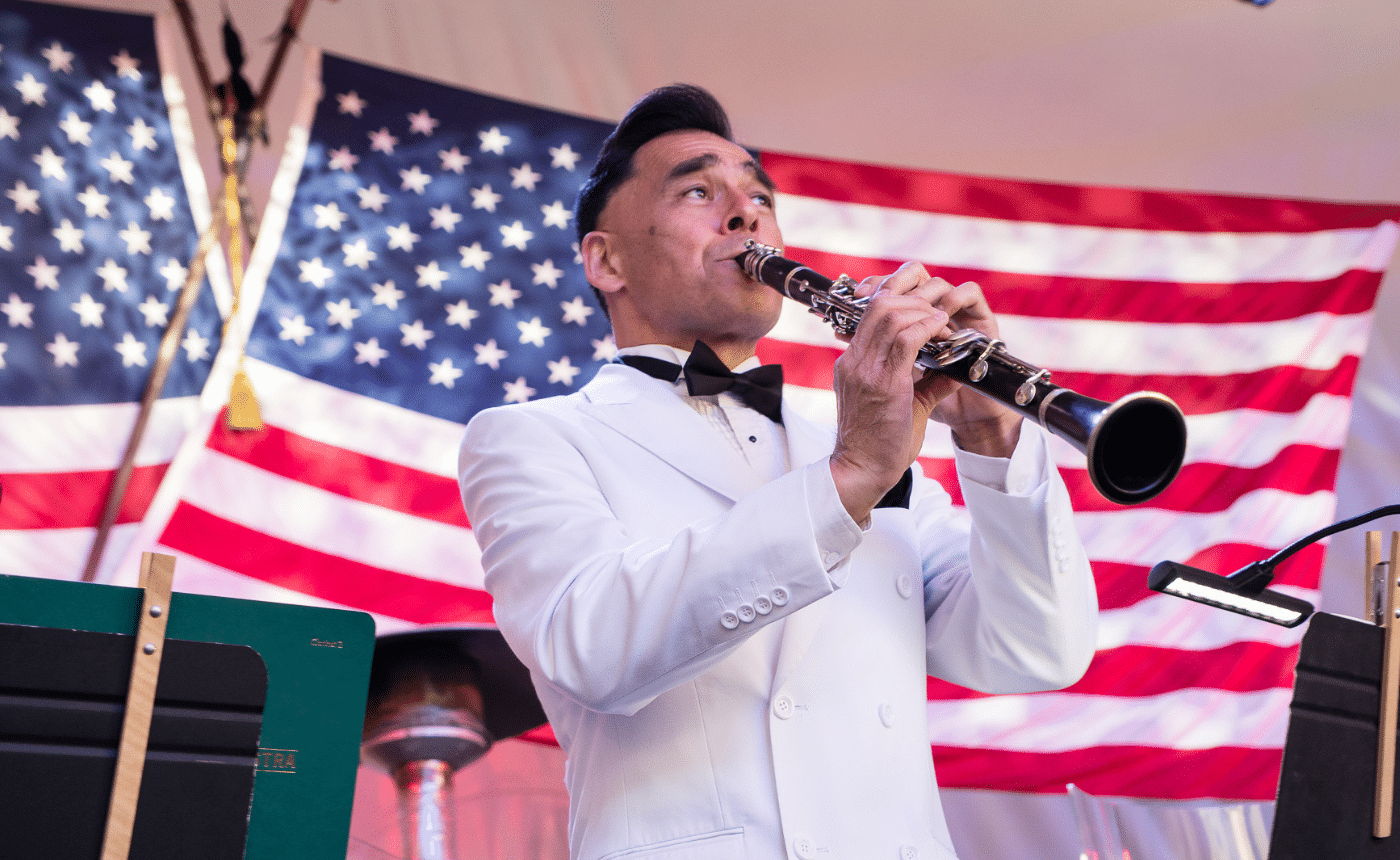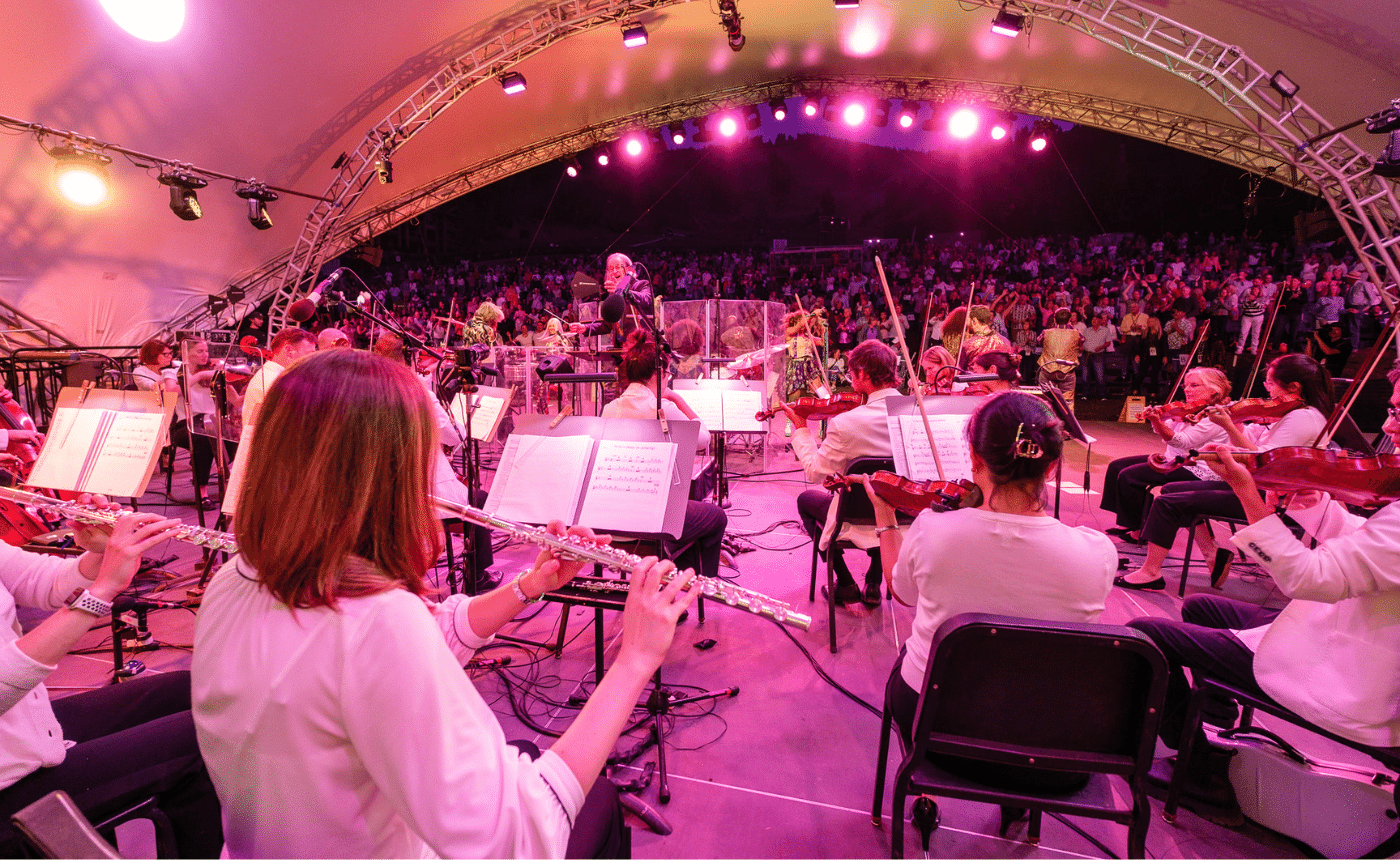Tchaikovsky – Concerto No. 1 for Piano and Orchestra in B-flat minor, Op. 23
Pyotr Ilyich Tchaikovsky (1877 — 1893): Concerto No. 1 for Piano and Orchestra in B-flat minor, Op. 23
Instrumentation: 2 flutes, 2 oboes, 2 clarinets, 2 bassoons; 4 horns, 2 trumpets, 3 trombones; percussion; strings
Performance time: 33 minutes
Background
Trained as a pianist as well as a composer, Tchaikovsky was born into the great age of virtuosic concerto composition — the Romantic era of classical music — and his spectacular Concerto No. 1 for Piano and Orchestra is one of the staples of the genre. Concertos had been written for centuries, but Beethoven (born 1770) had raised the stakes; by 1875, when Tchaikovsky was 35 and was composing his Piano Concerto No. 1, pianos (and piano concerts) had grown in size. Composers followed Beethoven’s lead, relishing the chance to create large-scaled, serious concertos of spectacular difficulty. More than just popular hits, they also expressed a basic principle of the Romantic age: the individual’s struggle against opposition, the one versus the many. These vehicles for musical display – often, they were seemingly unplayable – helped make Paganini and Liszt into musical superstars.
Oddly, “unplayable” turns out to be a fateful word in the life of concertos by the hapless Tchaikovsky, who lacked both luck and self-confidence. The concerto literature is rife with works that are now popular, their greatness undisputed, that were condemned by critics and soloists back in the day. Most often, they were described as having been written “against the instrument” or as technically unplayable. Were soloists hedging their bets? It’s hard to know; playing the unplayable was right on their calling card. Tchaikovsky’s Piano Concerto No. 1 and the Violin Concerto in D both suffered this characterization, and both are now among the most beloved concertos in the standard repertory.
When it came to the violin, Tchaikovsky was on less-than-familiar ground, and he proceeded with nervous caution after being inspired by Edouard Lalo’s exuberant five-movement concerto. (His work with violinists in preparing the score didn’t ease its way into the world.) But Tchaikovsky was a respected pianist, and though he lacked the encyclopedic technique of Russia’s foremost soloists, he could be confident of his knowledge of the instrument and how to write for it. For it he created a concerto in which towering grandeur and poetic utterance are abundant and unmistakable – earmarks of a hit concerto. The melodies are gorgeously lyrical and take advantage of the instrument’s expressive capabilities. So why did Tchaikovsky’s friend and intended dedicatee for the score, the great pianist Nikolai Rubinstein, diss it as artistically crude and, yes, unplayable? Musicologists are still speculating about the reasons, though after its quick success with the public and critics, Rubinstein changed his mind and praised it effusively.
What to Listen For
We can hear a characteristically Romantic spirit of heroic rebellion in the Concerto No. 1 for Piano and Orchestra. It bursts upon us with an opening that is explosive and iconic: a moment of brassy orchestral fanfare introducing thunderous piano chords grouped in threes. They are played in unison with both hands as they move in bold, multi-octave leaps up the keyboard.
Even if you had never heard this concerto before, this stunningly dramatic, oft-quoted opening would be instantly recognizable. But listen again and notice Tchaikovsky’s remarkable musical calculation here: The piano soloist grabs the primary role, even entering alone. But once the orchestra enters, it has the melody. Those chords, so full of life and confidence, actually accompany the orchestra’s statement. They can be heard as a heroic response to the melodic lifeline. Once it has been introduced, the piano takes up the melody in a manner that is vigorous but more moderated and less tumultuous, setting up a pattern of alternating grandeur and lyricism that prevails throughout this concerto.
As 21st-century listeners we are the beneficiaries of this concerto’s unusual performance history and the landmark interpretation of the great American pianist Van Cliburn. When Cliburn won the first International Tchaikovsky Piano Competition in Moscow in 1958 (he was a tall, rangy, young-looking 23), the Cold War was at its height; Sputnik had been launched the previous year, and the space race and the arms race were on. His victory came with this concerto, and it had an impact we can scarcely imagine now. He received a tickertape parade down Broadway and instantly became an American hero. But the response was even more dramatic in Moscow, where weeping listeners rushed the stage and mobbed him. Why?
In a sense, the answer goes back to the concerto’s duality – the alternation of heroic and poetic sound that Tchaikovsky gives us with unique deftness as he mixes powerful, pounding chords and parallel octaves with rippling passages of rapid fingerwork that require flawless legato. Superbly trained Soviet-era pianists combined accuracy and power. But where was the bold, passionate, dramatic individuality of the Russian pianists of yore? Under the Soviet system, such highly personalized expressiveness was shunned. But in Cliburn’s performance, the judges heard this kind of interpretive artistry combined with superb technique, and the conclusion was undeniable; listeners heard a cherished part of their national patrimony being restored to them by the unlikeliest of artists.
As we hear tonight, post-Cliburn pianists play this concerto their own way — not his, but always striving to meet a very high and very public standard that has become art of classical music mythology. In soloists such as Alexander Gavrylyuk we are privileged to hear a modern-day interpreter who is the heir of all these great performance traditions as he puts his personal stamp on one of the great concertos of the piano repertory.












